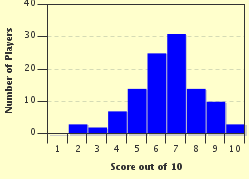Quiz Answer Key and Fun Facts
1. This is a radiological image of the hand of a patient suffering from osteoarthritis. Look at the X-ray carefully and pick out one of the main features of osteoarthritis which is clearly seen where the thumb meets the hand.
2. The supracondylar fracture of what long bone is one of the most common orthopedic ordeals in children and is related to a complication called Volkmann's ischemia?
3. The malignant bone tumor called osteosarcoma has what characteristic appearance on an X-ray?
4. The disease osteoporosis is commonly associated with which of the following?
5. Notice the lumps on the feet in the picture. This commonly occurs as a complication of fractures when there is ossification (conversion into bone) of a hematoma (blood clot) around a joint which leads to the formation of a new mass of bone. What is this condition called?
6. Which of the following would be an appropriate method of treatment for acute osteomyelitis?
7. What is the scientific term for clubfoot?
8. Colle's fracture is associated with which joints?
9. The person in the picture has a condition called genu valgum. What is the common term for this condition?
10. Lateral epicondylitis is an orthopedic condition also called what?
Source: Author
Saleo
This quiz was reviewed by FunTrivia editor
rossian before going online.
Any errors found in FunTrivia content are routinely corrected through our feedback system.


